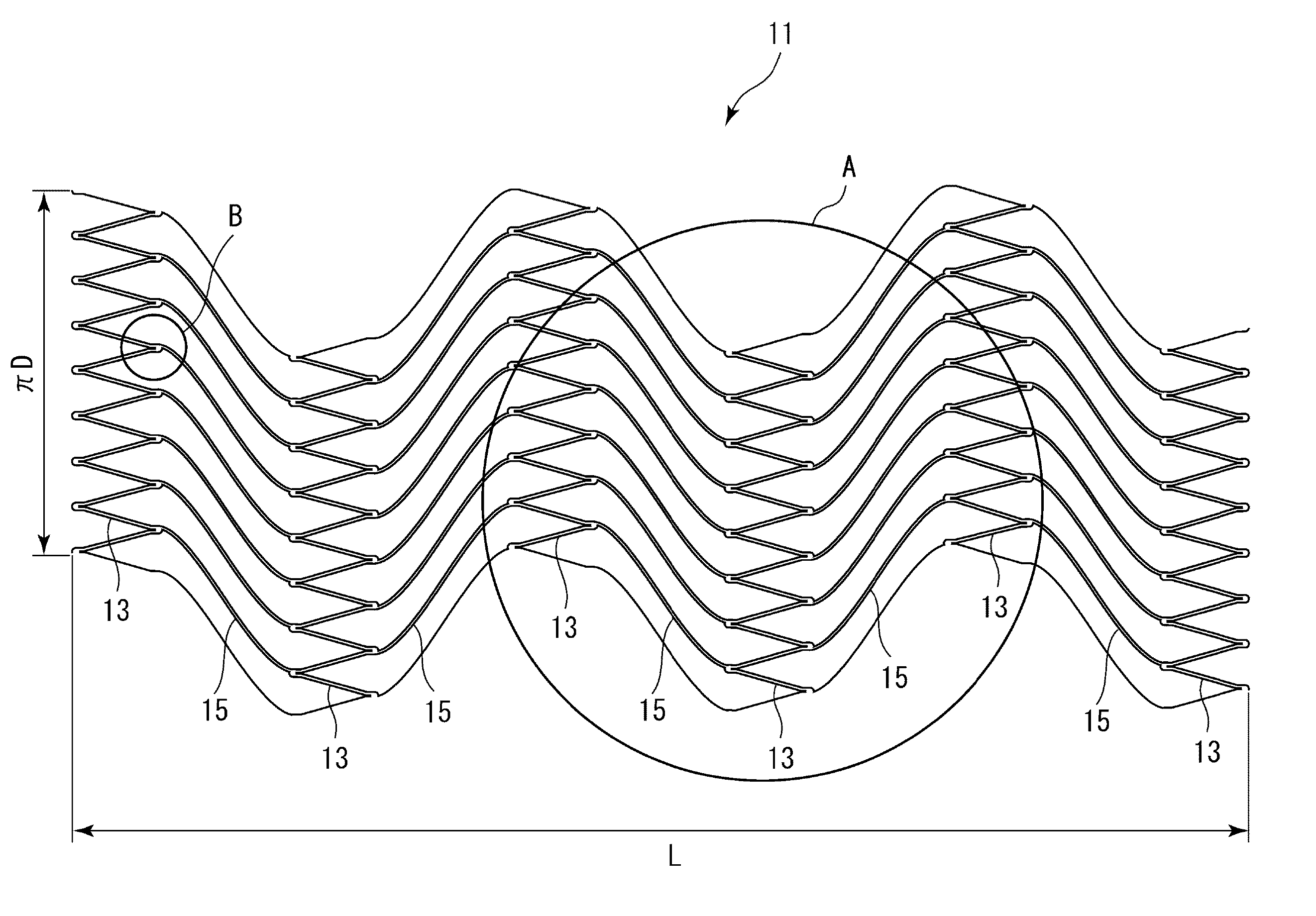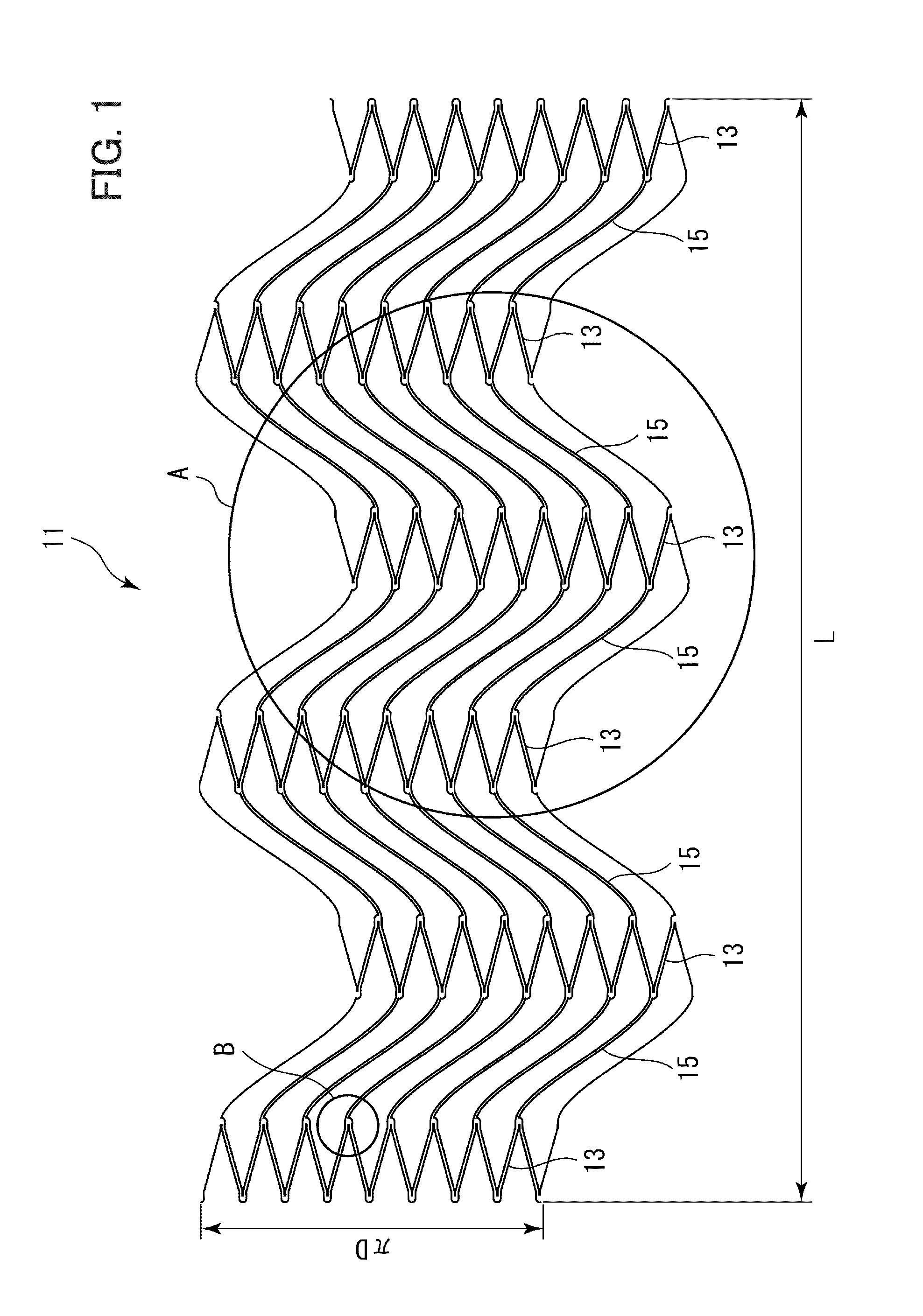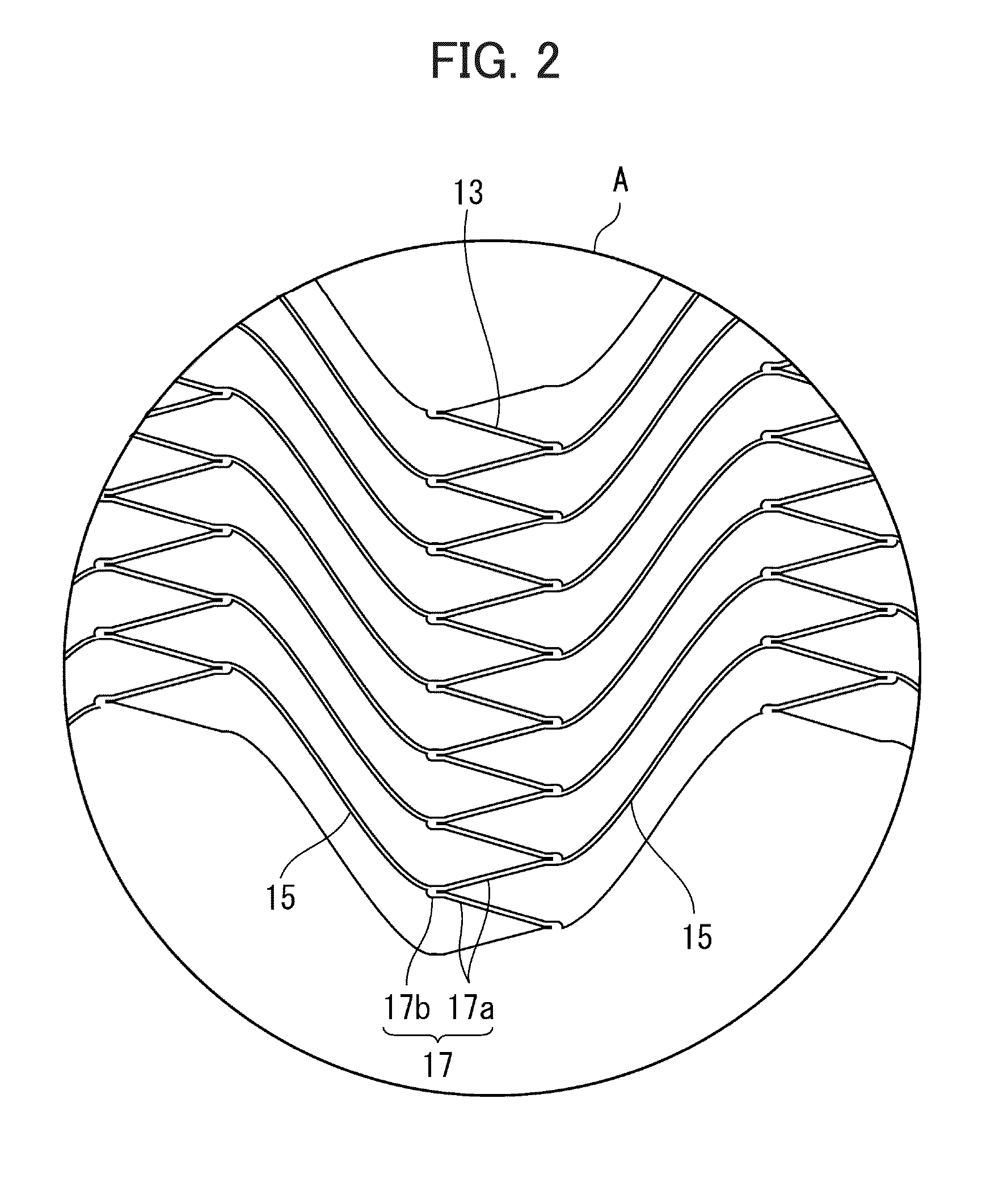Highly flexible stent with sinusoidal pattern
a stent and sinusoidal pattern technology, applied in the field of high-flexible stents, can solve the problems of inability to adapt to the shape of the overall stent with respect lack of flexibility of the structure, and inability to inhibit the flow of liquid, so as to reduce the risk of damage, the overall stent conforms to the structure of the blood vessel, and the effect of reducing the risk of damag
- Summary
- Abstract
- Description
- Claims
- Application Information
AI Technical Summary
Benefits of technology
Problems solved by technology
Method used
Image
Examples
Embodiment Construction
[0039]In the following, embodiments of a highly flexible stent according to the present invention are described with reference to the drawings. With reference to FIGS. 1 to 3, an overall configuration of a highly flexible stent 11 according to one embodiment of the present invention is described.
[0040]The stent 11 is of a substantially cylindrical shape, with the diameter thereof being D and the length in a longitudinal axis direction being L. A peripheral wall of the stent 11 has a structure of a mesh pattern in which a plurality of closed cells having a congruent shape surrounded by wire-shaped materials is covering a circumferential direction. In FIG. 1, for the purpose of facilitating understanding of the structure of the stent 11, the stent 11 is illustrated in a state expanded in a plane. Here, in the present specification, the peripheral wall of the stent 11 refers to a part that separates the inside from the outside of a cylinder with a substantially cylindrical shape of the...
PUM
 Login to View More
Login to View More Abstract
Description
Claims
Application Information
 Login to View More
Login to View More - R&D
- Intellectual Property
- Life Sciences
- Materials
- Tech Scout
- Unparalleled Data Quality
- Higher Quality Content
- 60% Fewer Hallucinations
Browse by: Latest US Patents, China's latest patents, Technical Efficacy Thesaurus, Application Domain, Technology Topic, Popular Technical Reports.
© 2025 PatSnap. All rights reserved.Legal|Privacy policy|Modern Slavery Act Transparency Statement|Sitemap|About US| Contact US: help@patsnap.com



